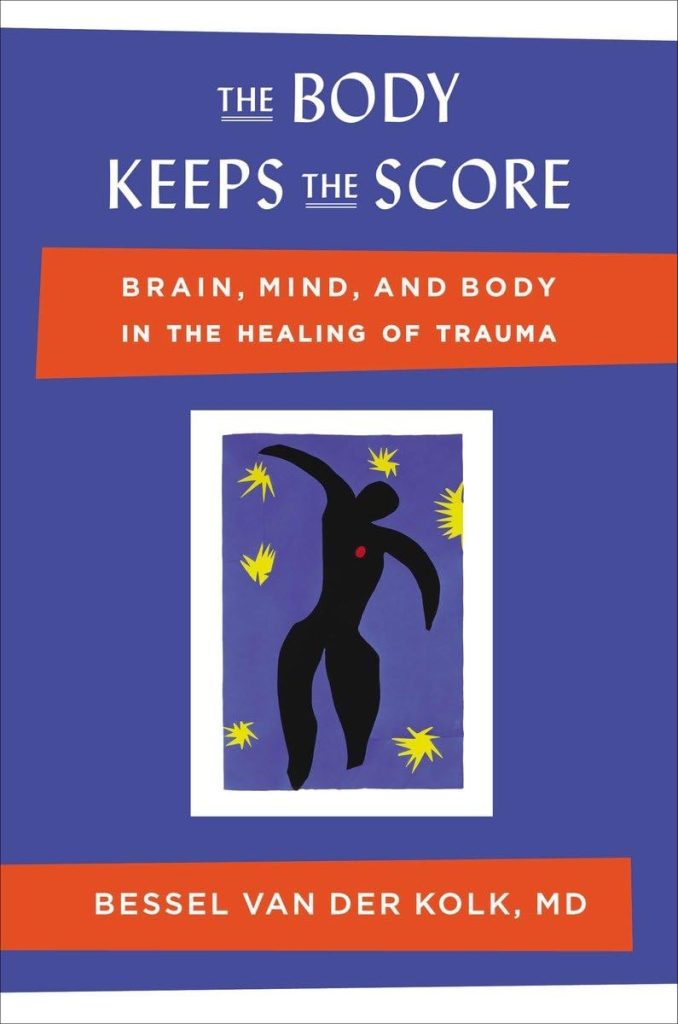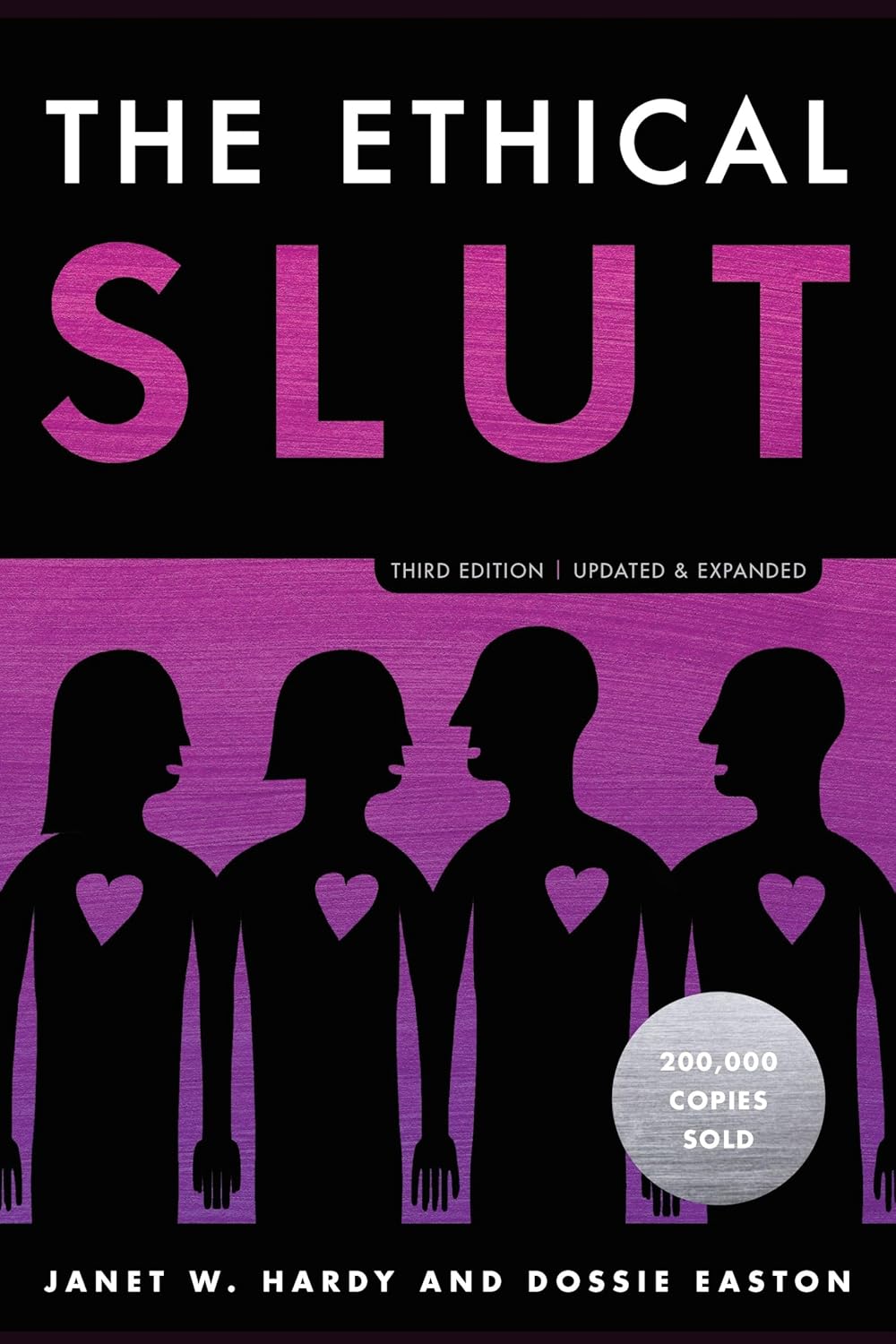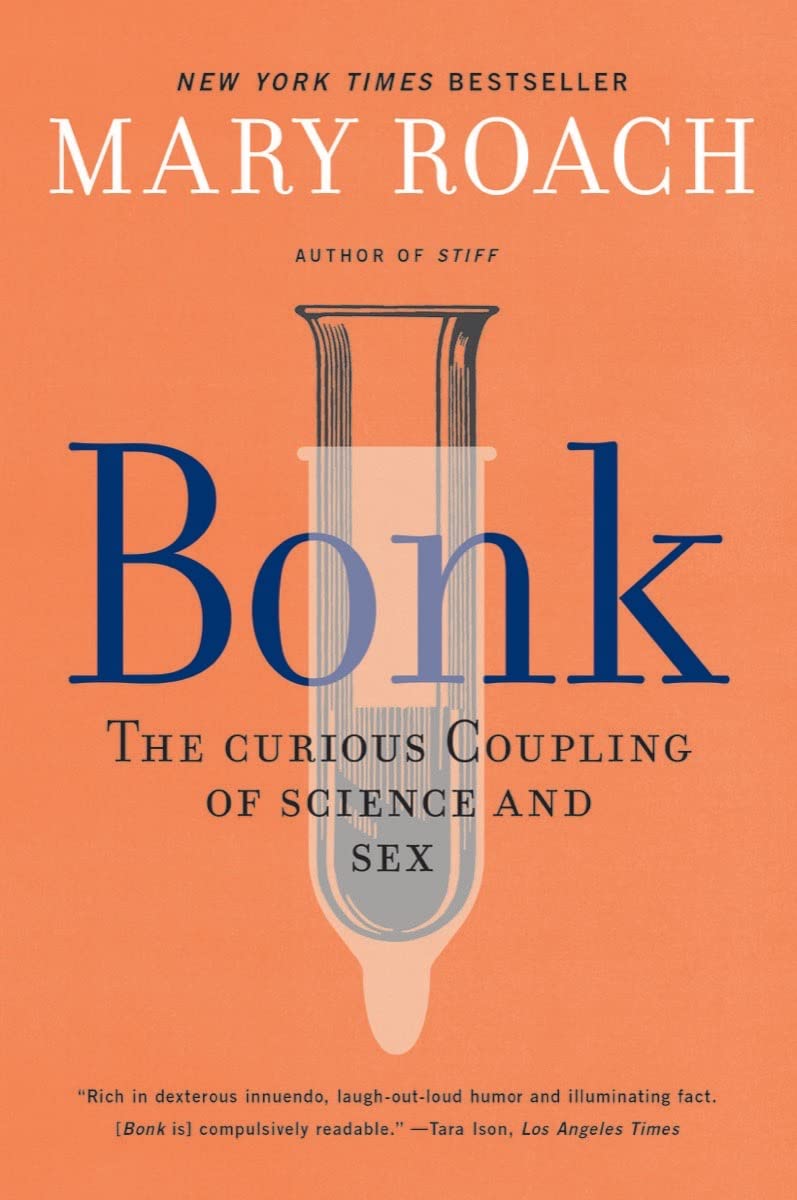
Buy The Book
The Body Keeps the Score: Brain, Mind, and Body in the Healing of Trauma

About
“The Body Keeps the Score: Brain, Mind, and Body in the Healing of Trauma” by Bessel van der Kolk, a renowned psychiatrist specializing in trauma, explores the devastating impact of trauma on the mind and body, and how to heal from it. Van der Kolk elucidates how trauma reshapes the brain, impairs emotional regulation, and disrupts relationships.
The book delves into innovative treatments like EMDR, neurofeedback, and yoga, emphasizing the importance of body-awareness in overcoming trauma. By integrating neuroscience with psychological insights, it offers a comprehensive understanding of trauma’s effects, providing pathways to regain control, reconnect with oneself, and build resilience. It highlights the necessity of fostering safety and self-awareness to fully experience life beyond trauma.

Spark
Learn
Review
✦ Part One: THE REDISCOVERY OF TRAUMA (Chapter 1-3)
A journey begins with lessons gleaned from Vietnam veterans, transitioning into revolutions in understanding mind and brain, and culminating in a look into the brain through the lens of the neuroscience revolution.
The first encounter with the profound complexities of trauma came through the stories of Vietnam veterans at a VA clinic. Among them was Tom, whose experiences revealed how trauma could inextricably link individuals to the past, blurring the line between survival and living. Tom’s loyalty to fallen comrades, preventing him from taking medication for nightmares, highlighted the depth of the issue. Horrific experiences had rendered individuals like Tom hopelessly stuck in their pasts. How do they occur that people become hopelessly stuck in the past? What happens in people’s minds and brains that keeps them frozen, trapped in a place they desperately wish to escape? Why did this man’s war not come to an end when his parents embraced him at Boston’s Logan International Airport after his long flight back from Da Nang?
The VA clinic became a classroom, teaching about the nature of trauma. Veterans struggled with rage, emotional numbness, and difficulty in intimate relationships. There’s a exploration to understand how lives are shattered by overwhelming experiences, and in figuring out how to enable them to feel fully alive again. In studying these men, they exhibited many of the same symptoms.
Their actions during wartime was the only source of meaning. This led to an appreciation of the challenges faced by traumatized individuals—the shame, confusion, and difficulty in articulating their experiences. These experiences resonated deeply, questioning the prevailing diagnostic labels and treatment approaches.
As the narrative progresses, insights emerge that trauma affects perception and imagination, altering how individuals construct mental images from ambiguous stimuli. Trauma creates new perceptions and realities. In light of these observations, there are questions to consider about whether trauma could truly change how someone views the world and whether they could return.
The narrative shifts toward a greater understanding of mind and brain, revealing a profound transition in the medical approach to mental suffering. The early days of the psychopharmacology research unit were challenging.
The complexities of each patients’ lives was apparent, and their stories shared during the quiet moments of the night raised questions about the nature of hallucinations and the boundaries between memory and imagination. The medical model in action with the case of force-feeding was an important issue because, in fact, their display of “caring” must have felt to her much like a gang rape. This highlights the importance of individual needs and preferences.
However, these observations also sparked a quest to understand the biological underpinnings of mental illness and the potential of pharmacological interventions. The advent of new drugs, like chlorpromazine and lithium, offered hope for alleviating mental suffering and transforming psychiatric care. The experience of witnessing such transformations left questions to ponder about whether such interventions could bring long-lasting relief.
Intrigue grew around the science of trauma. There were explorations of the phenomenon of learned helplessness in animals and the role of stress hormones in mediating the effects of traumatic experiences. New insights emerged about how trauma can alter perception and imagination, leading to a sense of disconnection from oneself and the world. The discovery was whether we also could help my patients with their fundamental orientation that there was nothing they could do to defend themselves? Did my patients also need to have physical experiences to restore a visceral sense of control?
Insights into the neurological basis of trauma led to further questions about the relationship between pleasure, pain, and addiction. A exploration led to an appreciation of how individuals become hooked on dangerous and painful situations. Fear and aversion, in some perverse way, can be transformed into pleasure.
This exploration led to a focus on the potential of modulating brain chemistry to alleviate trauma-related symptoms. The effects of Prozac on people were fascinating. It was observed that the medication helped them feel more present and less enslaved by their emotions. We can also make a strong case that Marsha is hypersensitized to her memories of the past and that the best treatment would be some form of desensitization.
These insights came, however, with caution to consider the limitations of psychiatric medications. Even with success stories the medications may deflect attention from dealing with the underlying issues, and there’s a critical point for treatment. This is what our clinic always aim for: We can help those who are overwhelmed by horror and helplessness.
✦ Part Two: THIS IS YOUR BRAIN ON TRAUMA (Chapter 2-6)
Part Two delves into the brain’s response to trauma, exploring the anatomy of survival, the crucial connections between body and brain, and the unsettling experience of losing oneself.
The journey begins with an examination of innate reactions to danger. The events of September 11th illustrate this. The author notes the resilience of a five-year-old who, witnessing the disaster, used his imagination as a coping tool. Ordinarily, feeling safe allows engagement with surroundings, forming relationships, and growth. Trauma, however, disrupts this natural rhythm. When faced with peril, the brain’s alarm system activates intensely. The amygdala, the brain’s warning system, signals danger, initiating physiological responses for survival. The sympathetic nervous system prepares the body for action, while the hippocampus attempts to provide context using past experiences. Simultaneously, the prefrontal cortex evaluates the situation and devises a response – fight, flight, or freeze.
Overwhelming trauma can disrupt this. The prefrontal cortex may shut down, leading to purely instinctual responses. The hippocampus struggles to create a coherent narrative, causing fragmented memories, flashbacks, and difficulty controlling emotions. Individuals are left at the mercy of primal instincts, constantly prepared to fight, flee, or freeze.
The exploration shifts to the intricate connections between the body and the brain, highlighting how trauma manifests physically. Interoception, our awareness of internal bodily signals, becomes disrupted, resulting in a disconnect from the physical self. The book then delves into the impact of trauma on the nervous system, with an emphasis on how the autonomic nervous system (ANS) which controls involuntary functions such as breathing, heart rate, and digestion, becomes disrupted, causing long-term issues such as chronic pain, fatigue, and digestive problems.
Furthermore, trauma inhibits the capacity to regulate emotions, which creates greater sensitivity to stress, increased difficulty in managing anger, depression and anxiety, and problems in forming relationships. A sense of embodiment is lost. In the therapeutic process, the individual needs to reconnect with their body by engaging in physical activity, mindfulness, and feeling safe. Finding a sense of purpose and meaning will move the trauma survivor beyond survival, finding purpose and meaning that engages in acts of service or creative ways of living.
The journey also delves into the individual’s struggle to discover that they are losing themselves after the tragic event. The loss of self can bring about the common experiences of being detached, dissociation, and a sense of unrealness. The discussion explores the ways that trauma creates a formation of personality states, and how those states dictate the thoughts, feelings, and behaviors of the individual.
The importance of regaining agency and authenticity following trauma is underscored. Rediscovering one’s voice, setting boundaries, and engaging in self-expressive activities are vital. The individual can look toward engaging in activities that have some self-discovery and expression, creating an environment for themselves that gives the individuals the potential for growth.
The journey concludes with the importance of embracing compassion, both for oneself and others who have experienced trauma. The individual can see that the universal nature of embracing the understanding of suffering, showing kindness and understanding to those who are struggling with their own internal difficulties. They should not be made to feel as though they are struggling alone. By recognizing the impact of trauma on the brain and body and embracing holistic approaches to healing, individuals can embark on a journey of self-discovery and transformation, reclaiming their lives from the clutches of trauma and embracing the fullness of their humanity.
This process must be guided with a sensitivity to not re-triggering flashbacks or sending them back to the trauma and fear that they are trying to escape. They need to build trust in the therapist and know that they are in a safe place.
✦ Part Three: THE MINDS OF CHILDREN (Chapter 7-9)
Part Three explores the impact of early relationships on children’s developing minds, examining the critical roles of attachment, the detrimental effects of abuse and neglect, and the fundamental importance of love.
It begins by considering attachment, highlighting how essential attuned relationships are for healthy development. Long before conscious memory takes hold, babies are learning about safety, predictability, and connection. These earliest experiences shape their expectations of relationships and their ability to regulate their emotions. Secure attachment isn’t simply about meeting basic needs like feeding and changing diapers; it is about consistently responding to a child’s emotional cues, creating a sense of being understood and cherished. This attuned responsiveness helps a child feel secure enough to explore the world, knowing they have a safe base to return to. Babies are not just passive recipients but active participants, communicating their needs through cries, facial expressions, and body language.
Attunement is discussed, as the understanding that providing food is only part of the care. There must be a deeper connection to the child that goes beyond basic caretaking, meeting the emotional needs as they arise. Being attuned means paying close attention to these signals, trying to understand what the child is communicating, and responding in a way that validates their experience. It’s about creating a “dance” of reciprocal interaction, where both caregiver and child are actively engaged and influencing each other. The attachment early in life with the parents will be how the child builds relationships with others.
However, the shadow side of these early relationships is also examined, focusing on the devastating impact of abuse and neglect. When a child experiences consistent rejection, emotional unavailability, or outright violence, the consequences can be profound. These adverse experiences disrupt the development of secure attachment, leaving children feeling unsafe, unworthy, and unable to trust others. Abuse and neglect can manifest in many forms, from physical violence and sexual abuse to emotional invalidation and chronic neglect.
Children need to feel as though they are safe and have a person to go to, and when a child feels as though that is not the case, there can develop difficult connections. The child can learn how to cope with these issues but in a way that makes it more difficult for the child to have healthy relationships. It then begs the question of what came first, the chicken or the egg. Did the parents have these emotional issues before they became parents? A child can also be very sensitive to what is happening in their house, and know when tension is high. They can feel as though it is their fault, and then learn to take on that responsibility when it is not theirs.
The exploration then turns to the essential role of love, emphasizing that it is not simply a feeling but a fundamental need for healthy development. Children thrive when they feel loved unconditionally, accepted for who they are, not for what they do. This love provides a buffer against stress, fosters resilience, and promotes a sense of self-worth. Love is expressed through physical affection, words of affirmation, quality time, acts of service, and gifts. The amount and the way it is delivered may change as the child ages, the basic concept should be at the forefront for their upbringing. The tone and feelings that the parents have between one another is also going to be how the child is going to feel as well. It can also lead to children thinking they have to earn love, but it needs to be freely given.
In closing, the minds of children and how they create relationships and feel love must be given the utmost importance. The most vital part is to give the youngest of the young children the ability to feel safe, have all their needs met, and know they have a family to provide care. Using that strong foundation, the children can feel as though they are safe enough to build healthy relationships with others.
✦ Part Four: THE IMPRINT OF TRAUMA (Chapter 11-12)
The journey begins by exploring the difficulty that many survivors face in remembering what has happened to them. It’s not about a conscious choice to forget or suppress, but a complex interplay of factors that make recall challenging. The book explores the nature of traumatic memory, emphasizing its often fragmented, disorganized, and sensory-based nature. The memories are sometimes completely blocked from conscious awareness, existing only as physical sensations, emotional reactions, or behavioral patterns. It is as though the traumatic event is imprinted on the body, rather than stored in a readily accessible narrative form. The discussion highlights the various factors that can contribute to these memory disruptions, including the neurobiological effects of trauma on memory processing, the influence of dissociation as a coping mechanism, and the impact of societal or familial pressures to remain silent.
It’s emphasized that uncovering these secrets is an essential step in the healing process, because without access to the full story of what happened, survivors may struggle to make sense of their experiences, understand their current struggles, and move forward with their lives. It provides a framework for understanding how these hidden memories can continue to exert a powerful influence, shaping thoughts, feelings, and behaviors in ways that may not be fully understood. It also reminds the reader that exploration must always happen within a framework of safety and support, recognizing that this process can be emotionally challenging and potentially re-traumatizing.
The exploration then turns to the problem of traumatic memory. Traumatic memories are very different from ordinary memories in a number of ways. It focuses on how traumatic memories differ from ordinary recollections. The traumatic experience affects how the information is processed and stored in the brain. It also looks at how those memories are organized and integrated into a person’s overall sense of self. First, traumatic memories are often encoded in a fragmented and disorganized way. Rather than being stored as a coherent narrative, they may exist as isolated images, sounds, smells, or body sensations. It discusses the sensory-based nature of traumatic memories, in which fragments of the traumatic experience are stored as visual images, sounds, smells, tastes, and physical sensations.
Second, traumatic memories are often highly emotional, characterized by intense feelings of fear, terror, rage, shame, or helplessness. There must be a careful balance of the memories. How did the individual experience the trauma, but also how has the trauma colored the way that they view their entire life?
Third, traumatic memories are often intrusive, meaning they pop into consciousness spontaneously and unwantedly, often triggered by seemingly innocuous stimuli. It goes on to explore the ways that these memories can intrude into daily life, disrupting concentration, triggering flashbacks, and causing intense emotional distress. There is often the result of having the sensation of being outside of your own body, and not quite sure how to go back.
The concept of “unbearable heaviness of remembering” is then examined, as the individual struggles to process what it is they have experienced. Remembering can bring the individual back to all the pain that they were hoping to avoid in the first place. The need to push forward, instead, is overwhelming, because there is a sense that by not remembering, it did not happen. The reader is reminded that dealing with the past is vital to knowing the whole story of the trauma.
The role of shame in perpetuating the cycle of trauma is also discussed. Shame can act as a powerful barrier to healing, preventing individuals from seeking help, disclosing their experiences, or connecting with others. Shame is often internalized as a result of trauma, leading individuals to believe that they are somehow responsible for what happened to them or that they are unworthy of love and support.
There is no one thing that an individual can do to heal, but it will take working toward the goal, as well as support to have those memories and integrate into the overall life. By creating the appropriate environment, trauma survivors can begin to process their memories, heal from the wounds of the past, and reclaim their lives.
✦ Part Five: PATHS TO RECOVERY (Chapter 13-20)
Part Five explores various avenues toward healing from trauma, focusing on self-ownership, the power and limitations of language, EMDR, yoga, self-leadership, creating structures, neurofeedback, and finding one’s voice.
The journey starts with an understanding that healing involves reclaiming ownership of oneself. The individual has to recognize their own body and being to come to know and understand what they are dealing with. The discussion highlights that true recovery means moving beyond being a victim to becoming an active agent in one’s own life. This involves recognizing one’s strengths, setting boundaries, and making choices that align with one’s values. It is the start of looking toward a future instead of living solely in the past.
The power of language to both heal and harm is explored. Language can be a miracle when it allows trauma survivors to articulate their experiences, connect with others, and create a coherent narrative of their lives. It can feel wonderful when one is able to relate to others, and to have people around who can understand the basic story. However, language can also be a tyranny when it is used to silence, shame, or invalidate survivors’ experiences. The ability to have a good vocabulary will help the trauma survivor to be able to explain their experiences in a way that they have not before.
EMDR (Eye Movement Desensitization and Reprocessing) as a powerful tool for processing traumatic memories and reducing their emotional intensity is examined. EMDR facilitates the integration of traumatic memories by helping individuals reprocess them in a safe and controlled environment. For the first time, the individual can move their trauma out of their mind and process the issues in a way that creates resolution. The process has to be very sensitive, however, so that the patient does not re-traumatize themselves.
The importance of embodiment is also examined, highlighting the effectiveness of yoga in helping trauma survivors reconnect with their bodies and regulate their nervous systems. Yoga provides a safe and structured way for individuals to increase their body awareness, release tension, and cultivate a sense of presence. There are many different types of movement that also allow people to come back into their body and not be living solely in their minds.
The journey then turns to self-leadership, and the goal of helping individuals to develop a stronger sense of self-efficacy and inner resilience is discussed. Self-leadership involves learning to manage one’s thoughts, emotions, and behaviors in a way that promotes well-being and goal achievement. Each person needs to explore their own feelings, and have a clear picture of what they are looking for in the future.
The need to create structure and routine in one’s life to provide a sense of stability and predictability after trauma is explored. Trauma can disrupt one’s sense of time, space, and order, so establishing consistent routines can help to restore a sense of safety and control. This can lead to feelings that the world is a good place. As a result, it may also bring about good sleep.
Neurofeedback as a technique for retraining the brain to regulate its own activity is examined. Neurofeedback helps individuals learn to control their brainwaves, which can reduce symptoms of anxiety, depression, and hyperarousal. The individual learns how to come out of the trauma response, and be more grounded and present in their being.
The journey culminates in the necessity of finding one’s voice through creative expression, storytelling, and community engagement. Expressing oneself through art, writing, music, or theater can be a powerful way to process trauma, connect with others, and reclaim one’s sense of agency. The healing that occurs through the various art modalities will set the survivor on a new course, knowing that they are free to express themselves in the future.
The importance of communal rhythms and healing in the community are vital. Finding a way to express one’s emotions and relate to those around can be very healing. Being with others will assist trauma survivors in healing from all that ails them, and they will finally feel that there is hope. Finding healing that can move the person beyond the events will lead them toward healing.
By embracing these diverse paths to recovery, individuals can move beyond surviving trauma to thriving in their lives, reclaiming their sense of self, and creating a future filled with hope and possibility.✦ The Origin Of This Book
For People
– Trauma Survivors
– Therapists
– Mental Health Professionals
– Educators
– Caregivers
Learn to
– Understanding Trauma’s Impact
– Recognizing Body-Mind Connection
– Exploring Healing Modalities
– Developing Self-Awareness
– Fostering Resilience









